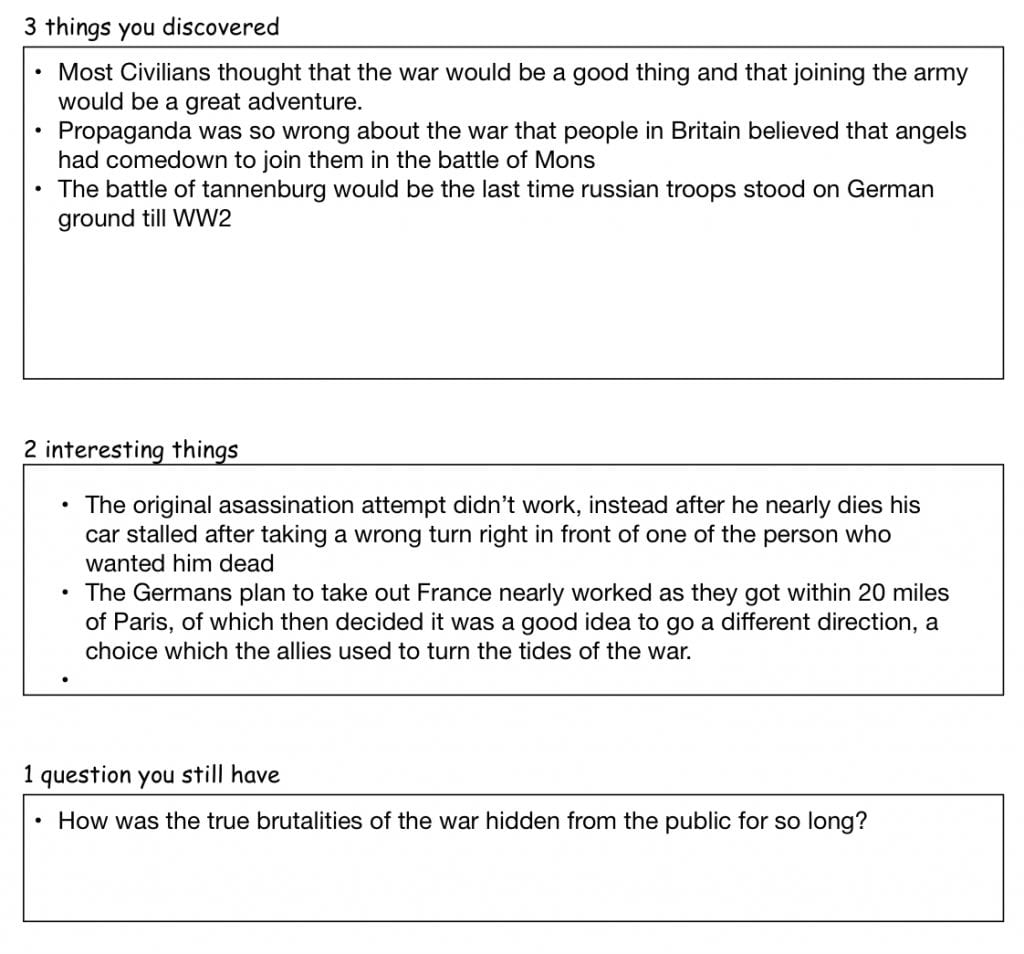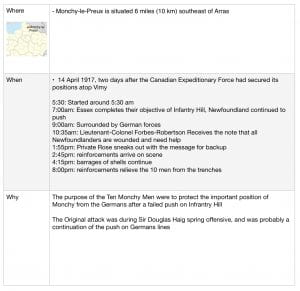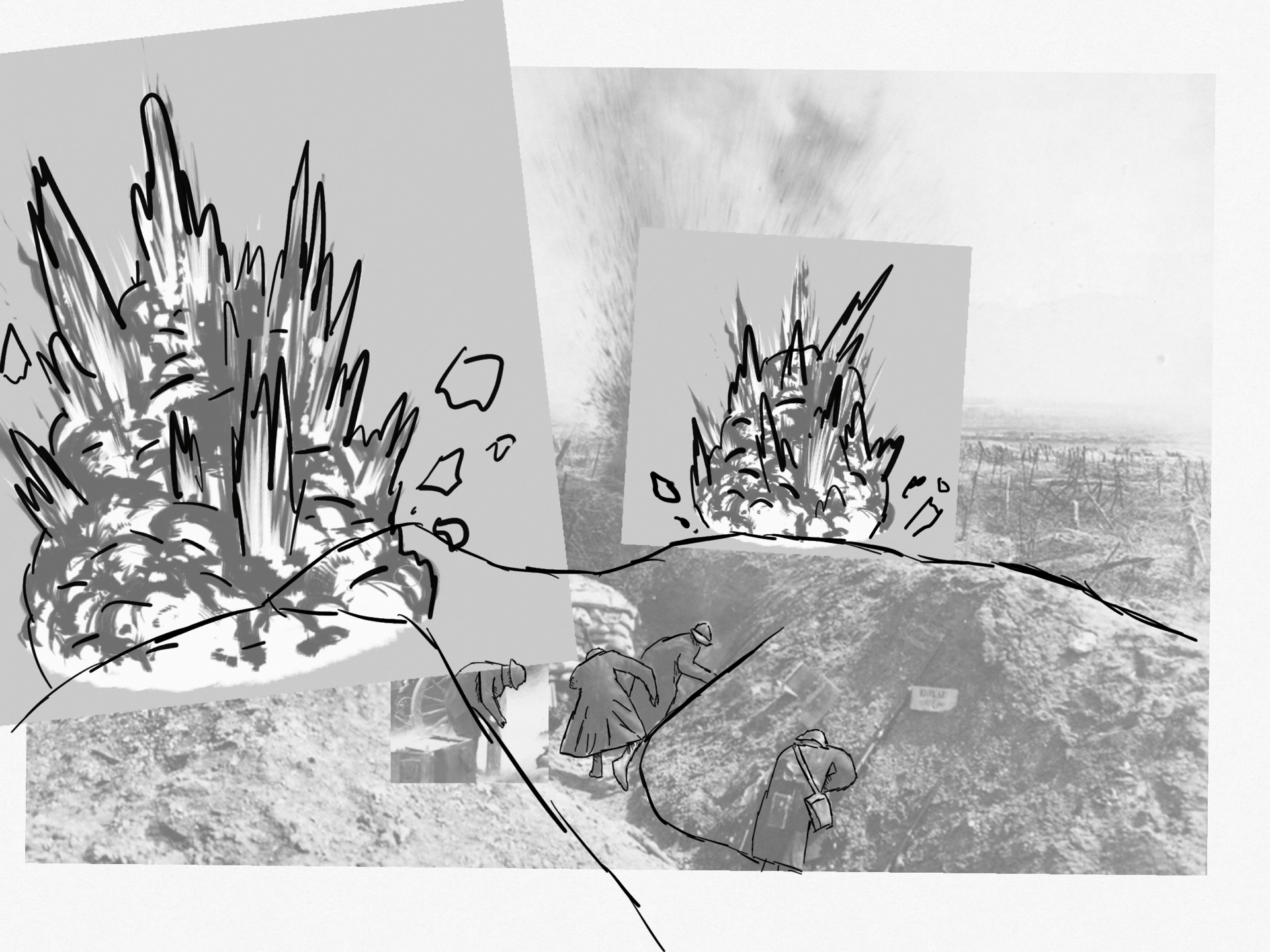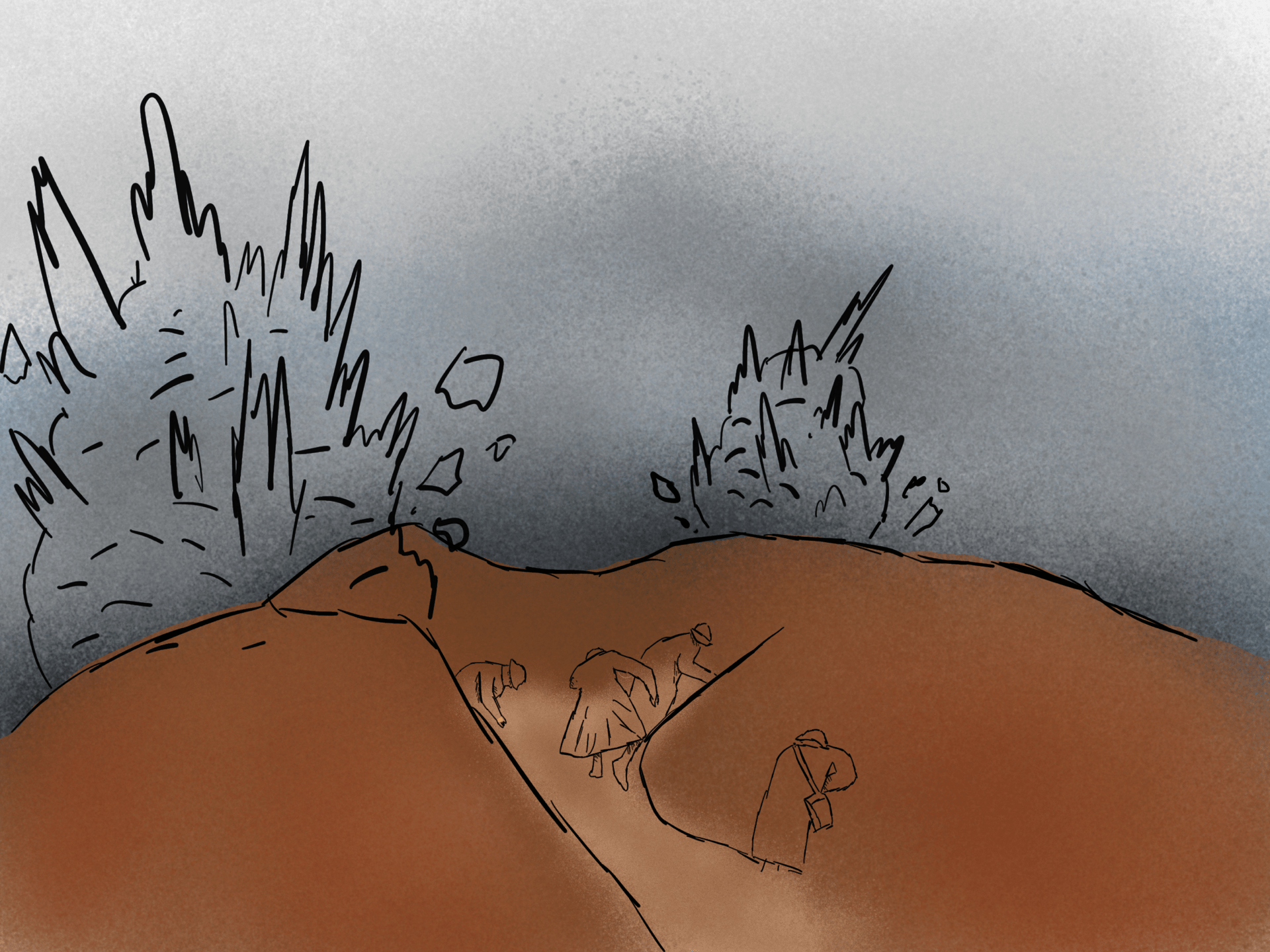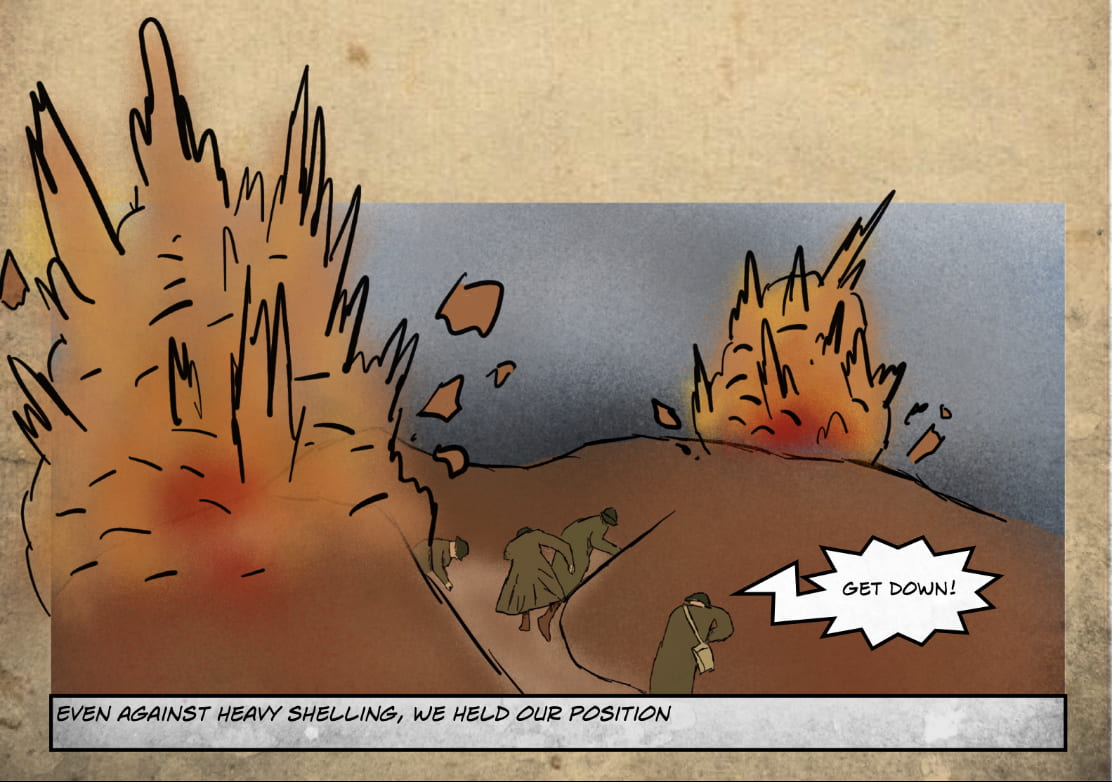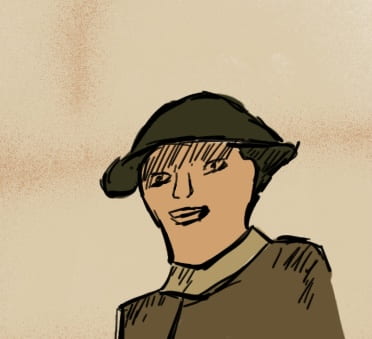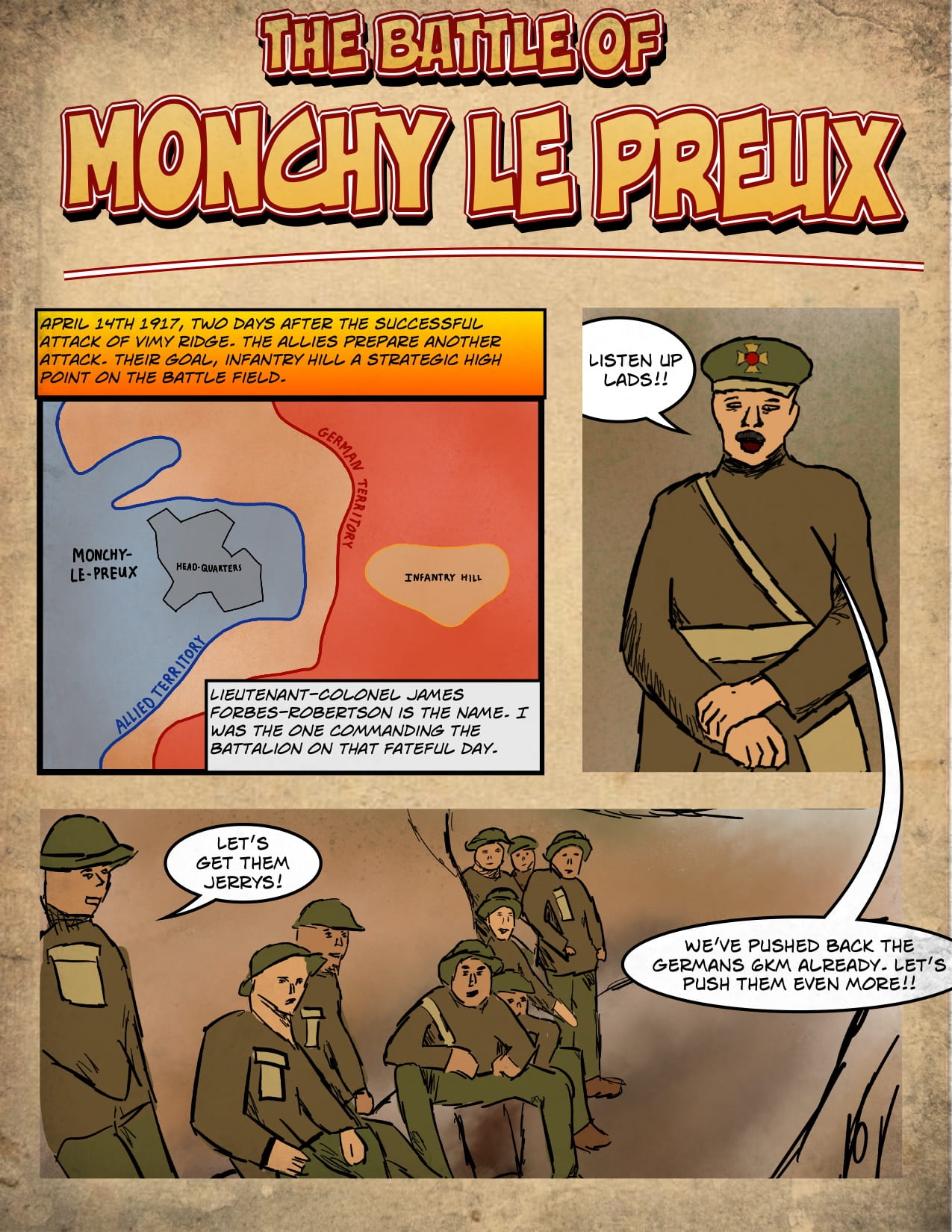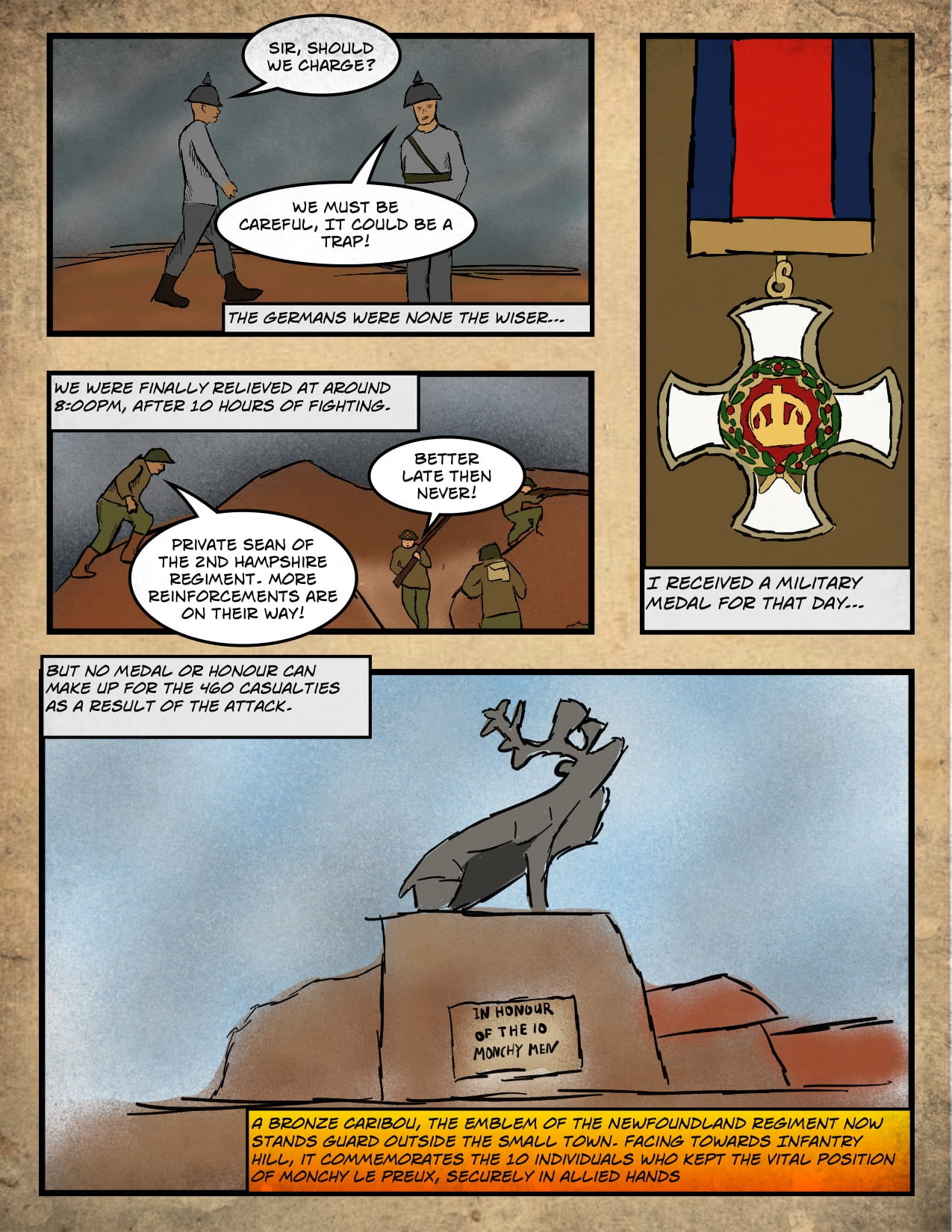Welcome to our latest project in PLP, WW1 Graphically told. As you could probably guess, this project is all about the consequences, the lives lost, and Canada’s involvement in one of the bloodiest wars of human history, all through the combined medium that is graphic novels. Let’s dive right in shall we.
To start off this project, we read an actual graphic novel about WW1. This was quite an interesting experience as I don’t read many graphic novels, and it was interesting to see the different ways they portrayed some of the events. We were also exposed to WW1 though a variety of other sources, including some textbook pages and the movie 1917. After we learned about WW1, we made many reflections to really solidify our knowledge on the subject.
For the graphic novel we did three reflections. The first was a 3-2-1 chart, in which we put down things we discovered, interesting facts, and some questions we still had about the subject
For the next reflection, we dove deeper into one of the battles the graphic novel talked about. We would then create a chart that included the 5W’s (Who, What, Where, When, Why) of the battle. This method of note taking was good to practice now as we would use it later in the project. I ended up with the battle of Loos, a badly coordinated attack made by the British, as it was also their first use of chemical gas in the battle field.
The last thing was a final written reflection of the long term and short term consequences of the war. For this we had to use evidence from both the graphic novel and textbook to support our opinions.
Overall these reflection activities did a good job at solidifying and sharpening the knowledge we gained over the course of the project. Most of them (3-2-1 sheet and 5W’s Chart) I’m pretty happy with. I’ve gotten a lot better at research and note taking over the course of the year and it’s becoming one of my stronger tools. Some of the the others (Consequences paragraphs) I feel had a lot going for them, but ended up running out of time and the final product was rushed. The Consequences paragraph especially has a lot of good evidence and arguments, but is formatted pretty badly and could have definitely benefited from more time.
Finally there was the movie, which was one of the final pieces of the puzzle before we got into the real meat of the project. Watching it was really interesting because of the way it depicted the war. Since we were going to make graphic novels, it was really helpful to see a professional and realistic rendition on the topic. It also exposed us to the challenges of writting our own story, something I would struggle with a lot as the project progressed. Overall it was a really interesting and entertaining movie that did a good job of putting you into the shoes of the actual people fighting the war, really giving you the feeling of suspense as you cross no-man’s land and into enemy territory. (4.2/5 would recommend)
Finally after all that research and learning about the different battles and consequences of WW1, it was time to make our own little graphic novel. We were each given a battle to base our graphic novel on. I was assigned the Battle of Monchy le Preux, of which I knew nothing about (Yay!), so time to do some more research! To guide us during our research, we once again used the 5W’s, to make sure we got all the available information.
The research was once again one of my stronger parts of the project. It turns out that the battle of Monchy Le Preux only lasted one day, which meant that there was a lot of information. I even found a war diary that went over the entire battle with exact times and plans of the battle from start to finish. It wasn’t a very exciting read, but it provided a lot of information that let me get a very good understanding of entire battle. However, this amount of information ended up being a double edged sword when it came to making the graphic novel.
Speaking of which, how do you make a comic? Well the plan was to use Comic Life 3 to format the comics, then trace different pictures for the images. But before we got to all that, we first needed to create a story spine and a story board, which means creative writing… whoop! I have never been the best at creative writing, and not surprisingly it ended up being one of the hardest parts of the project. After my first attempt, I ended up with a pretty terrible story, which is where the bad part about having too much information came in. Having so much information meant that I didn’t have a lot of creative liberty surrounding what happened in my story without altering the actual events. This meant I ended up with a story that was long, hard to understand, and detracted from the main focus of the battle.
To fix this, I decided cut out all the unnecessary side lines to focus on the main part of the battle, the 10 men that saved Monchy while being outnumbered 50 to 1. The real story was already interesting, so why not add on from that.
With this new story board in place, it was time to start drawing! I ended up using sketches-pro to create all of my drawings. For each drawing, I layered multiple images on top of each other, then traced them to create the final scene. Overall I’m very pleased with how the drawings turned out. I put a lot of effort into them (probably too much) and am quite happy with the overall feel it gives the comic. The rough messy lines were a deliberate style choice to try and make the images fit the type of story and topic that I was telling, and I think it worked quite well. (Just please don’t look too closely at the faces)
Once the drawings were complete, it was time to put it into comic life and complete our comic.
In the end, I like how my comic turned out. I feel it goes through the 5W’s, and includes many small facts and details from the actually battle which I think is quite cool (for example, the medal on the last page is what the actual medal he was awarded would have looked like). So after all this, how can we answer the driving question of the project, How might we use graphic novels to understand Canada’s involvement in WWI? Well graphic novels are a great medium as they combine the use of visual and text to tell stories. We can use this to our advantage to tell the different stories of the impact that Canada had on WW1. In my case it was the Newfoundland Regiments vital protection of the strategic village that was Monchy. Without the bravery of the 10 men that risked their lives to stop the German counter attack, Monchy would have fallen, potentially changing the outcome of the war. However everybody has their own stories, and graphic novels are just one way to continue to tell and understand the different stories that have influenced the world today.
See you next time,
Nolan🪖
